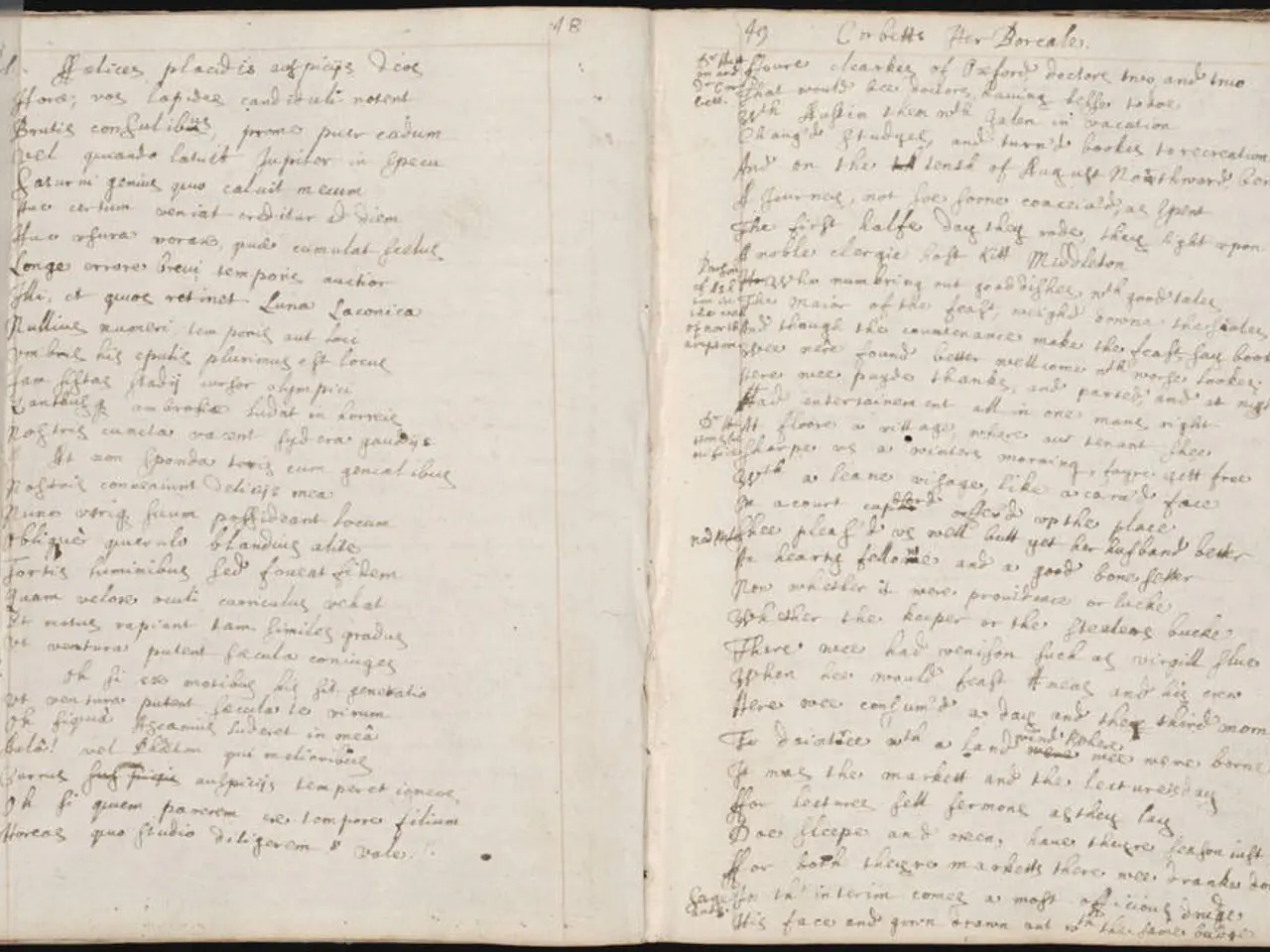"Mastering Character Development Takes Much Time Due to its Complexity"
In the world of storytelling, crafting believable, dynamic, and emotionally real characters is no easy feat. Meg, the creator of Novelty Revisions, a platform dedicated to helping writers put their ideas into words, acknowledges this challenge.
Charting a character's growth from the beginning to the end of their story is an essential outlining step for any author. A story's characters are crucial, and if the author doesn't care about them by the climax, they consider it a poor story. This complexity arises from the challenge of balancing internal conflicts, backstory, psychological depth, and how a character’s experiences shape their present behavior and evolution in the story.
Effective character development can be achieved by building a detailed backstory, using character profiles and tools, incorporating meaningful flaws, connecting characters’ identities and arcs to larger thematic stakes, and showing characters’ emotional complexity through their choices and vulnerability.
Trauma especially adds emotional depth and internal conflict, making characters more relatable and their reactions credible. Character profiles and tools like a Character Development Workbook or an Emotion Thesaurus help writers convey nuanced, realistic emotions and consistent behavior. Incorporating meaningful flaws that affect characters seriously and drive their arcs, such as arrogance or bitterness, ensures characters face genuine internal struggles and growth opportunities.
Connecting characters’ identities and arcs to larger thematic stakes, such as reclaiming identity or confronting collective histories, deepens the narrative resonance beyond just personal growth. Showing characters’ emotional complexity through their choices and vulnerability allows them to be flawed, driven, or grieving instead of polished or idealized.
By carefully crafting these elements and allowing characters to face challenges that shape their evolution, writers create rich, compelling characters whose journeys engage and move readers. However, keeping a reader interested in a story while working through the character's development is one of the most challenging parts of writing a full-length novel.
The process of deciding a character's development is likened to speeding up time, and is considered difficult. Developing a story can involve spending hours figuring out each character's individual arcs without writing anything. In stories, time is not the same as in the real world, and it takes time to understand how events impact a character's life.
Taking the time to get to know characters before and during writing is emphasized as important. The author notes that character development in a story begins with a life-altering event and involves the character "growing up" as they learn from the events that set their story in motion.
The author acknowledges that it's easy to criticize poorly executed stories, but reminds readers of the difficulty in telling stories, especially in developing characters. The author has read many fascinating and poorly executed stories in their lifetime. Good stories are hard to make, as indicated by the time they take to write. Developing a character takes a lot of writing experience, and a writer's first story may not have fully developed characters.
Character development is a challenging aspect even for experienced writers. Characters will not develop themselves; writers must set out with enough knowledge to start writing. The author suggests that the process of writing and character development can serve as a metaphor for life. In the process of writing, the author may create stories with well-developed characters and expertly crafted plots, as well as stories that miss the mark in important elements.
In short, the difficulty lies in making characters believable, dynamic, and emotionally real—effectively achieved by rigorous backstory creation, consistent emotional expression, purposeful flaws, and meaningful arcs grounded in both personal and collective stakes.
Reading a diverse collection of books provides an excellent source of entertainment and insight into effective character development. The intricate character journeys portrayed in books like "To Kill a Mockingbird" and "The Kite Runner" showcase the importance of balancing internal conflicts, backstory, psychological depth, and the impact of a character's experiences on their present behavior and evolution.
As writers seek to create compelling characters, they can find inspiration and guidance in the beautifully crafted characters found within the pages of books, fostering a deeper understanding of what makes a character emotionally real and relatable.






